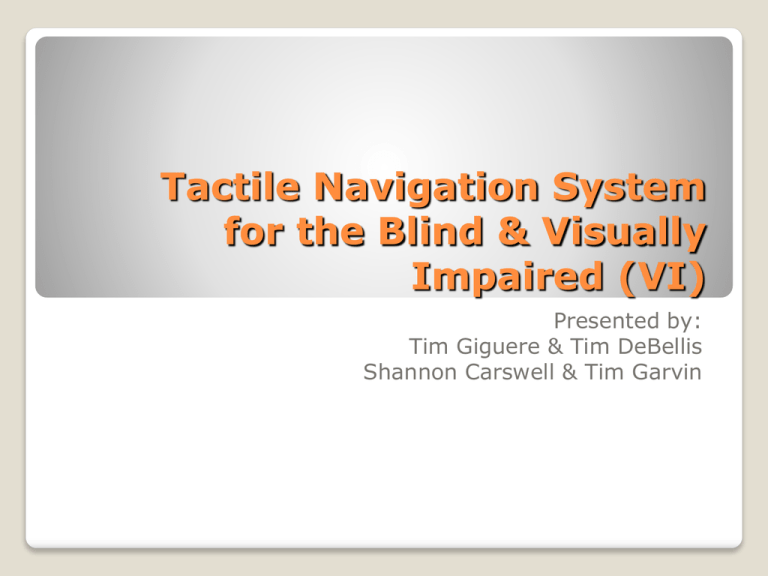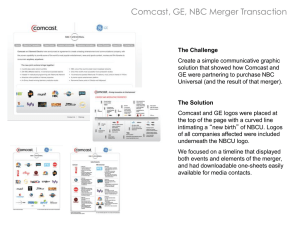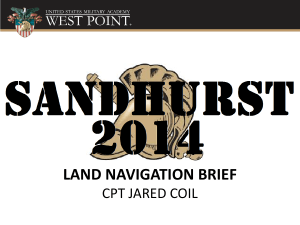IEEE Presentation
advertisement

Tactile Navigation System for the Blind & Visually Impaired (VI) Presented by: Tim Giguere & Tim DeBellis Shannon Carswell & Tim Garvin Objective: Develop a device to aid the VI and blind in navigation throughout a building using a tactile interface. Issues Faced: ◦ Campus and Classroom navigation ◦ Predominate use of memory for navigation ◦ Current market technology unreliable and expensive This is a combination of two Senior Design Projects: ◦ Intra-Building Navigation ◦ Tactile Interface Problem Statement Intra-Building Navigation: Functional Decomposition Intra-building Navigation: Concept Generation Navigate Building Input Destination Keypad Voice Braille Automaticread schedule Read Location of User RFID GPS IR Ultrasound Generate Directions Compass Map Piece by Piece Direct. Compass and Map Interface Directions Sound Digital Display Tactile Display Braille Display Track Location RFID GPS IR Ultrasound Verify Location Tag Id’s GPS Location Ultrasound Readings IR Signature Intra-Building Navigation: Concept Selection Step #1 Screening RFID IR Web Dog (REF) 2 RFID tags RFID and IR Aug. GPS RFID and Compass Availability of parts + + + D + + - + Distance 0 0 0 0 0 + 0 Cost of parts + + - + + 0 + Size + + + + + + + Accuracy + + 0 + + + + Ease of Integration + + + + + + + Cost of upkeep + + + + + + + Sum + 's 6.00 6.0 0 4.00 6.00 6.00 5.00 6.00 Sum 0's 1.00 1.0 0 2.00 1.00 1.00 1.00 1.00 Sum -'s 0 0 1 0 0 1 0 Selection Criteria A T U M Net Score 6 6 3 6 6 4 6 Rank 1 1 3 1 1 2 1 Continue? YES YES NO DATUM YES YES NO YES Intra-Building Navigation: Concept Selection Intra-Building Navigation: Selected Concept RFID Technology ◦ Place passive tags throughout the building to identify locations ◦ Use the reader to track location of user ◦ Develop navigation algorithm to produce directions between user and desired location Compass ◦ Provide initial bearing to produce accurate directions Intra-Building Navigation: RFID Testing and Results Read Range for Alien 'G' Inlay with PS 0˚ 345˚ 360˚ 60 330˚ Test Procedure: ◦ Initial Read Range USB Power Supply ◦ Surface ◦ Height Placement ◦ Engineering Specifications Accurate Directions Repeatability ◦ Directions ◦ Location Identification Latency Mean Learning Time 30˚ 45˚ 40 315˚ 15˚ 50 60˚ 30 300˚ 75˚ 20 10 285˚ 90˚ 0 270˚ 105˚ 255˚ 120˚ 240˚ 135˚ 225˚ A50 150˚ 210˚ 195˚ 180˚ A49 165˚ A48 Read Range for Alien "G" with USB 0˚ 360˚ 50 15˚ 345˚ 30˚ 40 330˚ 45˚ 30 315˚ 60˚ 20 300˚ 75˚ 10 285˚ 90˚ 0 270˚ 105˚ 255˚ 120˚ 240˚ 135˚ 225˚ 150˚ 210˚ 195˚ 180˚ 165˚ A50 A49 A48 Intra-Building Navigation: Interface Intra-Building Navigation: Navigation ‘Hybrid’ Algorithm ◦ Graph Traversal ◦ Area Navigation A B C Intra-Building Navigation: Navigation ‘Hybrid’ Algorithm ◦ Graph Traversal ◦ Area Navigation A B C Develop a tactile interface that blind and VI individuals can use as a personal navigator Device operation: ◦ Destination Input ◦ Entry to Internal Map comparison ◦ Directional information relay to user via tactile means Device operation dependent on customer needs. System Integration Customer Needs Housing Structure Top and Side walls constructed from HDPE and Garolite plastic. Bottom is rapid-prototyped at RIT Brinkman Lab. Directionality Servo-driven tactile pegs Tactile pegs made of HDPE Proximity Vibration Motor Controlled by pulse width module to output 2 second vibrations Mechanical System Design Stress Analysis Fatigue Analysis Vibration Analysis of Motor ◦ FEA models for compressive load scenarios ◦ Servo-arms tested under bending with servo max stall torque. ◦ Modified Goodman Criteria applied. Plastic component stresses applied to research data for fatigue conditions ◦ Issue of human exposure levels. ◦ 5 m/s^2 max for exposure time allowed. ◦ From testing, motor reaches between 25 and 55 minutes of constant exposure Mechanical System Design Analysis Built around an 8-bit PIC C-based microcontroller. Motors controlled by PIC and driven by BJT network. Keypad continuously polled in software, user entry stored in variable length string String will eventually compared to internal map to provide directional info 6V rechargeable NiMH battery Electrical System Design Individually test components for functionality Prototype system using PIC development kit Create ‘front end’ user inputs Move design to PCB Verify power levels Electrical System Design Strategy Tactile Team: Navigation Team: Christian Seemayer (EE) Shannon Carswell (EE) Rob Proietti (ME) Daniel Paris (EE) William Kelly (ME) Tim Garvin (CE) Tim DeBellis (EE) Daniel Stanley (CE) Tim Giguere (ME) Sponsors: Advisor: Dr. Elizabeth DeBartolo





